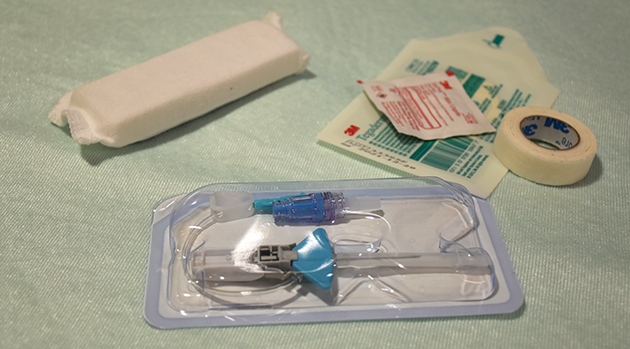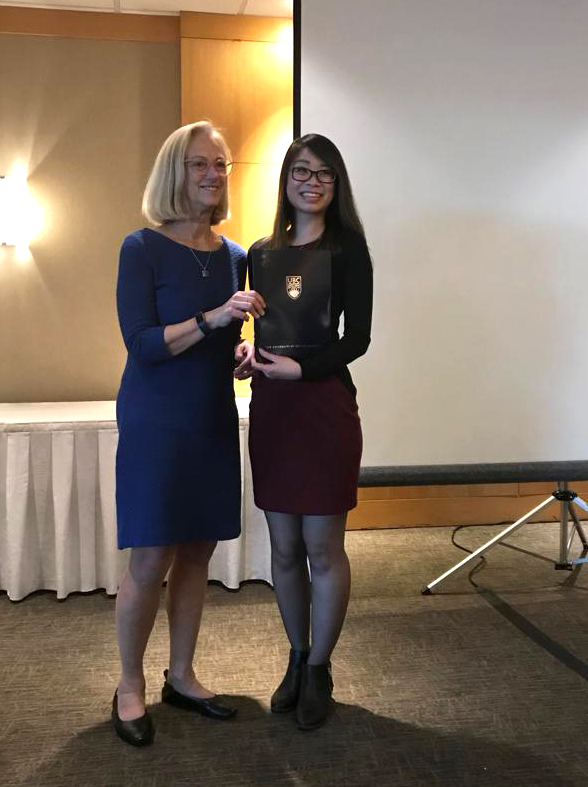

Children admitted to hospital often require medications delivered directly to their blood stream. This is normally achieved through the insertion of a peripheral intravenous catheter (PIVC). A PIVC is a small plastic tube that is inserted into a person’s vein and left there for the delivery of medication or hydrating fluids.
While necessary for treatment, the insertion of a PIVC is a time-consuming, painful and invasive procedure. Unfortunately, the device often stops working before the end of treatment and needs to be reinserted. That’s why the medical community has focused on finding ways to make PIVCs last longer.
There are currently two methods used. The first is called continuous infusion or ‘to keep the vein open’ (TKVO). This method involves putting a low volume of fluid through a PIVC continuously in order to keep the vein open. It requires a round-the-clock connection to fluids through tubing. The second method is called a saline-lock. It involves inserting a small amount of saline fluid into the PIVC, locking it off and then disconnecting additional tubing.
“While both methods are used in children’s hospitals across Canada, there is a perception that continuous infusion results in a PIVC lasting longer. Without evidence to support this perception, there is no uniformity in which method is used,” says Dr. Frances Yeung, a paediatric resident at Children’s Hospital at London Health Sciences Centre (LHSC) and Schulich School of Medicine & Dentistry, Western University.
This lack of evidence led Dr. Yeung and her supervisor, Dr. Sepideh Taheri, to launch a research trial through Children’s Health Research Institute, a program of Lawson Health Research Institute. They partnered with a team of nurses and physicians at Children’s Hospital at LHSC to compare continuous infusion to saline-locks. Their goal was to determine any differences in how long a PIVC lasts before needing reinsertion and whether either method is associated with increased complications.

The study included 178 research participants who were patients at Children’s Hospital at LHSC. Patients ranged in age from newborn to 17 years old. In the first three months of the study, all participating patients received continuous infusion to keep the PIVC working. In the next three months of the study, all participants received a saline-lock.
The research team compared data from all participants and found that there was no significant difference in how long the PIVC lasted. There was also no difference found in rates of complications and patient and caregiver satisfaction, although the team notes that one patient in the continuous infusion group had their PIVC removed early due to concerns over strangulation risk from the PIVC tubing.
“Our results challenge current perceptions. They suggest that the saline-lock method is a reasonable alternative to continuous infusion,” says Dr. Taheri, Associate Scientist at Lawson, Paediatrician at LHSC and Assistant Professor at Schulich Medicine & Dentistry.
The team notes that previous studies have shown that saline-locks have additional benefits over continuous infusion. Past studies have suggested saline-locks decrease risks of strangulation from PIVC tubing and are less costly to the health care system. It’s also easier for parents to care for their babies or infants when a saline-lock is performed.
“These findings could have a significant impact on improving patient safety and decreasing health care costs for children admitted to hospital,” says Dr. Yeung. “Since finishing the study, we’ve already seen a practice change among our colleagues where more nurses and physicians are ordering saline-locks over continuous infusions.”
Showcasing the importance of this research study, Dr. Yeung was recently awarded for her work in the resident category at the 31st Annual National Paediatric Resident and Fellow Research Competition.

Above: Dr. Frances Yeung receiving her award in the resident category at the 31st Annual National Paediatric Resident and Fellow Research Competition.